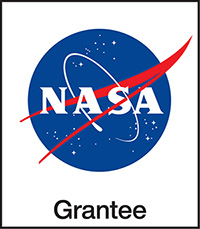Full Educator Guides
CONTEXT SETTING
ACTIVITIES
CONTEXT SETTING
ACTIVITIES
ACTIVITIES
How to Teach These Units
Ready, S.E.T. (Science, Engineering, Technology), Go!
Learners investigate water. As scientists, they figure out where water is located. As engineers, they design a technology to get the water.
Each PLANETS unit begins with Ready S.E.T. Go! to set context. Learners then share their own stories in Activity 1. Next, educators choose either the Science or Engineering Pathway, or both, if time allows. Learners do not need to repeat Ready S.E.T. Go! or Activity 1 when doing both pathways..

Guiding Question
How can we identify where there is water? How can we get it?
 Activity Timing
Activity Timing
10 MIN. Get Ready & Team Up
25 MIN. Plan & Create (S.E.T.)
10 MIN. Reflect (Go!)
45 MIN. TOTAL
Setup: Prep Time 90 min.
- Read unit.
- Print Notebooks.
- Prepare containers.
- Make Our Ideas poster.
*See Materials & Preparation in the Educator Guide linked above for full info.
21st Century Skills
- Critical Thinking
Habits of Mind
- Use a structured problem-solving process.
Science Practices
- Planning and Conducting Investigations
Learners Will Do
- As scientists, identify which container holds water. As engineers, design a way to get the water out.
Learners Will Know
- Water is a limited natural resource, but scientists can figure out where water is, and work with engineers to get it and use it.
Connecting Across Activities
- Ready, S.E.T., Go! Today, learners start exploring water. As scientists, they figure out where water is located. As engineers, they design a technology to get the water.
- Activity 1: Sharing Experiences: Next time, learners will share experiences with and stories about water.
Level Up! (Optional)
In the Educator Guide, you will see “Level Up!” Sections. These include great tips and activities that build and extend STEM and 21st Century skills, and create stronger connections between educators, youth, and families. They typically take a little extra time, so please plan accordingly.
- NASA has used satellite data to create a map of where water can likely be found near the surface of Mars. This map could be used by future astronauts to find drinking water on Mars! Read more on nasa.gov. (5 min.)
- For an additional challenge, learners can attempt to move the water using only index cards.
- Learners may believe that technology refers only to devices powered by electricity. Explain that anything designed by people to solve a problem is technology. Have learners identify non-electrical technologies around them. (10 min.)
- Have learners think about how their technologies would function if they were larger and used in a different setting, such as a river next to a farm field. What would have to change to make sure the technologies kept working as intended? (5 min.)
- Have learners create portrayals–through drawing, acting, or some other method of their choice–of scientists and engineers working together to identify and get water. (30 min.)
- Instead of using the premade Engineering Design Process, you can have learners make their own. If you do so, skip the next step and refer to the tip at the end of this section instead.
- If time permits, have learners create their own engineering design processes:
-
- Give each group index cards, markers, and one set of cards from Ready, S.E.T., Go! Phase Cards Handout (PDF). Explain that they should choose the phases they used to solve the trash problem. They can choose some or all of the phase cards, and they can write or draw their own cards (one phase per card). They should put the phases in the order they used them. (Note that the options shown on the phase cards are intentionally different from the phases of the EDP in the Engineering Notebook (PDF), to avoid implying that the EDP in the Notebook is the “correct” answer.)
- When writing their own phases, learners may describe specific actions, such as “We folded the index cards.” Through discussion, encourage learners to come up with terms to describe each phase of the process more generally, such as “We talked about it” and “We tested the materials.” If learners speak multiple languages, encourage them to discuss in their preferred languages.
- Give groups copies of the Ready, S.E.T., Go! Engineering Design Process Example Handout (PDF) for inspiration.
- Gather the group and compare processes. Organize all the cards in groups on a poster to create a whole-group engineering design process of between three and ten phases. (For example: ask, imagine, plan, create, test, improve.) Save this Engineering Design Process poster for use in future activities.
- Say: You have just designed a set of phases like the ones engineers use to solve problems: an engineering design process.

